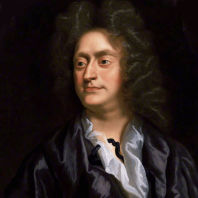Henry Purcell
composer
Henry Purcell was already a legend in his own lifetime thanks mainly to the English composer’s numerous stage works – such as The Fairy Queen, whose premiere on 2 May 1692 at London’s Dorset Garden Theatre exceeded everything that had gone before with flying machines, fireworks and artificial fountains. In addition to various works for the stage, his oeuvre also includes numerous odes, secular cantatas and instrumental pieces.
Henry Purcell is considered a Baroque composer like Vivaldi, Telemann, Bach and Handel, but since he was born in 1659, he is a generation older than them. He came from a family of musicians – his father and uncle were “Gentlemen of the Chapel Royal” – and grew up in Westminster during a time of conflict. Purcell was trained as a choirboy at the Chapel Royal, and by John Blow, Christopher Gibbons and Matthew Locke, and worked his way up from copyist to court composer in less than three years. As organist at Westminster Abbey, he succeeded John Blow and was appointed to a lifetime position, but his death at the age of only 36 cut his career short. Purcell was a loyal servant to the royal family, serving three monarchs during his 18 years as court composer. This period coincided with the so-called “Restoration Period”, when the Stuart King Charles II was restored as King of England in 1660. Under the reign of Charles II, music was to play a greater role in promoting the prestige of the court. As a result, compositions – both for the church and the court – broke new ground in terms of expression. This development was encouraged by French and Italian artists who were invited to London to provide creative inspiration. Without travelling himself, Purcell subsequently had ample opportunity to become acquainted with international trends and became a great mediator between the eras and styles of the time. He developed his own musical expression, which made him one of the leading English composers as the “Orpheus Britannicus”.